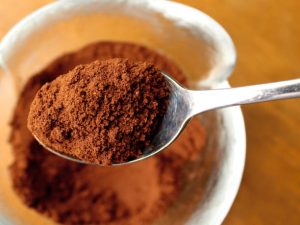
Coffee, often referred to as the elixir of life, has a rich history that spans continents and cultures. From its humble beginnings as a wild plant to the global phenomenon it is today, coffee has captivated our senses and fueled our energy for centuries.
In this article, we delve into the fascinating journey of coffee, exploring its origins, cultivation, processing, and the art of brewing that transforms these humble beans into a beloved beverage enjoyed by millions worldwide.

A Historical Journey of Coffee
The history of coffee is a captivating tale that spans continents and centuries. Legend has it that coffee’s discovery can be traced back to 9th-century Ethiopia, where a goat herder named Kaldi noticed his goats becoming unusually energetic after consuming berries from a certain plant. Intrigued, he sampled the berries himself and experienced a newfound vitality. This discovery eventually led to the cultivation of coffee plants and the birth of the coffee trade.
Coffee’s journey continued through the Arabian Peninsula, where it became an integral part of Islamic culture. The establishment of the first coffeehouses in Mecca and later in Istanbul transformed these places into centers of intellectual discourse and community gatherings. The coffeehouses quickly spread across Europe, becoming hubs of social interaction, innovation, and debate during the Age of Enlightenment.
In the 17th century, coffee found its way to the New World, with plantations established in Central and South America. The global trade of coffee beans soared, shaping economies and cultures across the globe. Today, coffee is one of the world’s most traded commodities, sustaining the livelihoods of millions of farmers and supporting entire economies.

Cultural Significance
Coffee’s impact on culture is immeasurable. It has become synonymous with both personal and communal experiences. Coffeehouses of the past have evolved into modern-day cafes, which serve as gathering spots for friends, colleagues, and strangers alike. These spaces foster creativity, business meetings, and casual conversations, making them integral to urban landscapes worldwide.
Different cultures have embraced coffee in their unique ways, resulting in a plethora of preparation methods and traditions. In Italy, the art of espresso-making is a point of national pride. In Ethiopia, the traditional coffee ceremony is a symbol of hospitality and friendship. From Turkish coffee’s rich history to the cold brew trend in contemporary America, coffee’s adaptability has allowed it to integrate seamlessly into diverse cultural contexts.
A Symphony of Flavors
The flavor profile of coffee is as intricate as its history. Factors such as the coffee bean’s origin, altitude, processing method, and roast level all contribute to the final taste. From the citrusy notes of African beans to the chocolatey undertones of South American varieties, the diversity of flavors in it is staggering.
Specialty its culture has brought attention to the nuanced flavors that it can offer. It connoisseurs explore single-origin beans, carefully roasted to highlight the distinct characteristics of their terroir. These enthusiasts engage in a sensory journey, detecting floral, fruity, nutty, and even earthy undertones in their cups. This attention to detail has elevated coffee from a simple beverage to an art form.

The Science of Brewing
Brewing coffee is a science that balances precision and experimentation. The pour-over method requires a steady hand and precise water flow to the French press that offers a full-bodied immersion brew, each brewing technique extracts different flavors and aromas. The development of espresso machines, Aeropress, and siphons has given coffee enthusiasts an array of tools to explore their brews.
Beyond the Cup
Its influence extends beyond its liquid form. Beans are used in culinary creations, from desserts like coffee-infused ice cream to savory dishes that employ coffee as a flavor enhancer. Its grounds have found new life as exfoliants in skincare products, while its sacks and burlap bags have inspired eco-friendly fashion and interior designs.
Furthermore, its industry’s sustainability and ethical practices have come to the forefront. Fairtrade initiatives and direct trade relationships have been established to ensure that coffee farmers receive fair compensation for their labor and commitment to quality. Initiatives to promote shade-grown coffee and environmentally responsible farming methods contribute to the conservation of ecosystems and biodiversity in coffee-growing regions.

Conclusion
It is more than a beverage; it’s a symbol of human connection, a testament to cultural evolution. And a sensory journey through history and flavors. From its humble origins as a curiosity in an Ethiopian field to its omnipresence in contemporary culture. It has maintained its ability to intrigue, inspire, and unite. So, the next time you take a sip from your cup. Remember that you’re participating in a tradition that has woven its way through centuries and across the globe. Connecting us all in a shared appreciation for this remarkable elixir.





